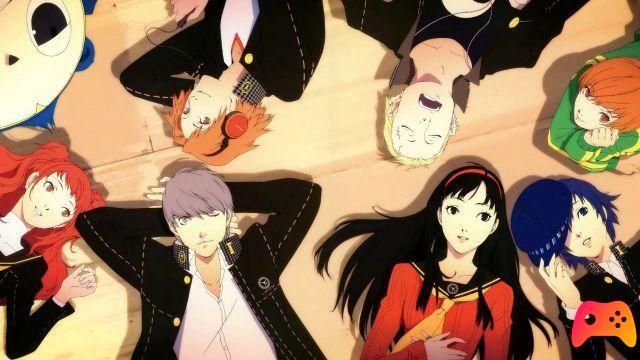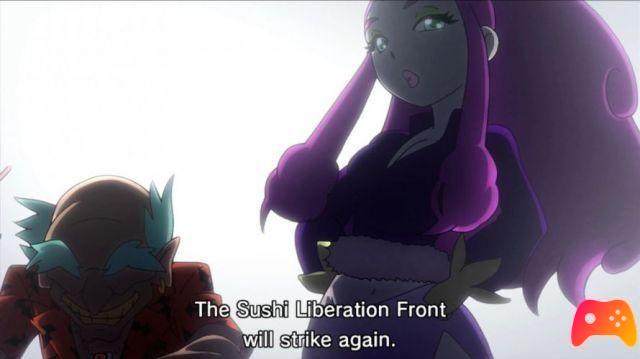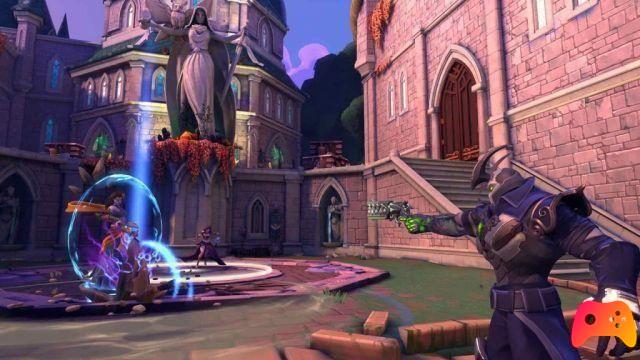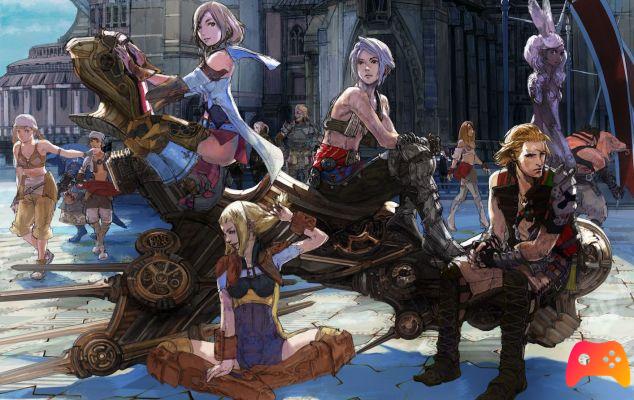
Finally, almost a year after the release at home, in February 2006 the countdown that separated them from the release of one of the best chapters of the Final Fantasy saga and one of the most beautiful games seen on PS2 also ended for PAL users : Final Fantasy XII.
The wait was long, also due to processing times that were not exactly quick and to the continuous references, but judging by the result it was worth it: in fact we have a chapter that could be defined as a turning point within the very famous series of jrpg born in 1987 in the studios (of the then) Squaresoft; the innovations are many and make the game enjoyable and fun even for newbies to the Square-Enix saga. Without a shadow of a doubt we are in front of an excellent product, but to better understand it let's analyze every (or almost) aspect of it.
The plot and the characters
One of the main advantages of the various Final Fantasy is that of having given us a series of exciting and engaging stories with well-curated plots that dealt with the most disparate themes (love, life and death, ecology, religion) with the addition of fantastic elements (airships, spells and increasingly varied bestiaries): in this FF, although it is always a fantasy story (and the elements mentioned above are certainly not lacking), we nevertheless notice a more adult and likely style: the the dominant theme is in fact the war between two Empires and various palace intrigues (themes already seen in FFtactics and Vagrant story, products of the same Director, Yasumi "Yazz" Matsuno), betrayals and duels, which greatly reduce the presence of purely carefree moments . This "sobriety" is also reflected in the character design of the characters and settings: forget the strong colors and a little kitsch of FFX or X-2, to enter a perfectly recreated medieval universe, made up of majestic cities full of life and downtown. bleak, wide deserts and mysterious woods, royal palaces and temples; in short, the world of Ivalice.
Another feature that has always been appreciated in Final Fantasy is the presence of an often unforgettable cast of characters; names like Cloud, Sephiroth, Squall, Gidan, Vivi, Yuna or Auron (and just to name some of the most recent ff), have deservedly entered the Olympus of video game characters and remain, even after years, in the hearts of fans . In this chapter we have 6 characters to control (Vaan and her friend Penelo, the pirate of the skies Balthier and his companion in adventures, the Viera Fran, Basch the warrior and the princess without a kingdom Ashe), but, according to many, despite a good graphic and psychological characterization for each of them, only three of them (Balthier, Basch and Ashe) are actually noteworthy: especially for the two youngest members of the group, (Vaan and Penelo) one gets the feeling that they are out of place within the story, and that their presence is almost forced. As for the supporting actors, nothing to complain, with the exception of the villain on duty, too stereotyped and not at all convincing compared to historical antagonists within the saga such as Sephiroth, Golbez or Kefka.
Furthermore, I would like to add that there is a certain lack of variety within the party: in Ivalice there are 5 main breeds (the Hume, that is men, the Viera, anthropomorphic rabbits, the Bangaa lizards, the Seeq, creatures similar to wild boars and the famous Moogle) and other minor ones, such as Nu-Mou and Garif, but with the exception of Fran, all the other characters are Hume: probably a choice dictated by the more realistic and serious tone of this episode.
The battle system and exploration
We will clearly notice the real novelty of the game when it comes to putting on our weapons and exploring the large environments of Ivalice: wandering around the sprawling environments all in 3D, we will bid farewell to the many loved / hated random battles! No more interruptions between exploration and battle, and above all the monsters to be faced will be clearly visible on the screen, so you can choose whether to start the fight or ignore them completely. Although this twist has flaws that we will explain later, it has made the battle system more intriguing as well as the exploration itself less frustrating, which tends to be no longer interrupted by a fight every few steps. Once we enter a new area we will see the members of our party free to roam at their leisure (with the exception of the cities, of course, where we will move almost exclusively Vaan), as well as the enemies, who behave according to their inclinations : harmless animals, characterized by a small green bar, will never attack first; conversely, creatures that have the red bar above their heads will attack as soon as they see you. As mentioned above, no breaks: we will understand that we are in battle only when we see colored lines starting from the character to the enemy and vice versa, or between members of the same party; the color of the lines determines the actions taken: red is the color of the enemy's attack, light blue for our attack, green indicates the healing actions between members of the same party; if all this may seem complicated and a bit confused at the beginning, I assure you that it is extremely useful to have these guidelines (also because enemies often attack in packs), indeed, without them, the action would undoubtedly still be more chaotic. Also within the battle we will notice another innovation of this Final Fantasy, or the Gambit system, which I will talk about later in more detail.
If every medal has its downside, this exploration / battle system in real time, as already mentioned, has more or less obvious flaws, which we must point out. In fact, although the play areas are vast, indeed sometimes too much, forget about an interaction with the landscape, finally everything in 3D: the most you can do is open doors or operate switches, or approach the treasure chests, and they will reveal the their content is completely random: you can find a few gil or powerful weapons, all absolutely random.
Another flaw lies in the fact that the enemies, sometimes simple ferocious animals, are able to attack and score even from great distances, while not casting any kind of spells: it is sometimes useless to keep away or try to get around the enemy, in the in fact, most of the cases, especially if the defenses of the attacked character are weak, the enemy attack will strike mercilessly, even if it is at a fair distance, thus forcing you to engage in the fight even if the strategy at that moment did not provide for it ( for example for too low HP and risk of being killed). Last drawback, but which for many is a merit, it often seems to play an expansion of FFXI, as the battle system owes much more to mmorpg than to classic jrpg.
The Gambit and the license points
The Gambit system will become the cross and the delight of FFXII players: properly arranging the list of actions that your characters will take in battle can make the game fun and enjoyable, but a simple mistake can be downright fatal and soon lead to the game over.
But let's go into detail: during the battle in fact we will have the task of moving only one of the members of the party, or the leader (who can be chosen at will), while the others will perform the actions present in their list of gambits appropriately set before starting. : for example, if Ashe has a list to heal allies with HP below 30% and then attack the same enemy as the leader, she will perform the actions in this order, depending on the priority we choose. If you want, you can also impose gambits on the leader, but in the end we would find ourselves mere spectators of the action, or on the contrary, set the game to move each character, but everything would be more frustrating to control. Without a doubt the gambit system will allow us to plan the game strategy and customize it as we see fit and has brought a breath of fresh air to the series, which does not hurt at all: who knows that it will not be maintained in subsequent episodes with the appropriate improvements.
The License Points, on the other hand, concern the growth of the character himself: in fact each enemy every time beaten will release in addition to the classic experience points, LPs (usually one at a time, with the necessary exceptions for the bosses and some enemies) that will be "exchanged" in the license board: this grid similar to a chessboard is reminiscent in some ways of the Spherography of Final Fantasy X: in it you can unlock the spells, skills, weapons, equipment and accessories only in exchange for a certain amount of LP: for example to be able to use the Fire magic, you must both buy the spell in the shop and unlock it on the license board of the character using the number of license points required; once this is done you can use the skill or the weapon or the spell in battle. The same goes for all items on the grid, practically for every battle action except physical attack. Needless to say, this system, however simple, can lead to a party of photocopied characters, just like it did in the final stages of FFX .; furthermore, having to buy an object every time and not being able to use it because it may not have been unlocked on the grid yet is in some ways limiting and boring.
Esper and Apotheosis
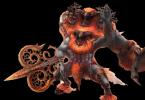 Another constant of Final Fantasy from the fourth chapter on are the Invocations, which have evolved over the years for spectacular design and power: FFXII is no exception, even if in this chapter, hoping to be able to invoke Shiva or Ifrit is impossible. In fact, the classic invocation spirits of the series will be present in other "forms" and will be replaced by the Esper, that is 13 monsters to be invoked inspired by the zodiac signs, which must first be beaten in order to use their power: once invoked, they will remain on the field battle with those who called them to "duty", and they will fight (without being able to be controlled directly) until the exhaustion of a time bar, and then launch a powerful attack just before "returning". Let's get right to the point: as beautiful (at least some) graphically, the Esters are of little or no use in the battle, and using them against the bosses can be even deleterious, so I believe that the use of invocations in this chapter will be limited by most. However, it is a great challenge to be able to find them all also because they will prove to be rather difficult opponents to find and to beat: before giving up the magic stone that will allow us to invoke them, they will be rather reluctant to follow us and will need a careful convincing operation.
Another constant of Final Fantasy from the fourth chapter on are the Invocations, which have evolved over the years for spectacular design and power: FFXII is no exception, even if in this chapter, hoping to be able to invoke Shiva or Ifrit is impossible. In fact, the classic invocation spirits of the series will be present in other "forms" and will be replaced by the Esper, that is 13 monsters to be invoked inspired by the zodiac signs, which must first be beaten in order to use their power: once invoked, they will remain on the field battle with those who called them to "duty", and they will fight (without being able to be controlled directly) until the exhaustion of a time bar, and then launch a powerful attack just before "returning". Let's get right to the point: as beautiful (at least some) graphically, the Esters are of little or no use in the battle, and using them against the bosses can be even deleterious, so I believe that the use of invocations in this chapter will be limited by most. However, it is a great challenge to be able to find them all also because they will prove to be rather difficult opponents to find and to beat: before giving up the magic stone that will allow us to invoke them, they will be rather reluctant to follow us and will need a careful convincing operation.
From a certain moment on in the game, however, we will be able to have quickenings, or limit breaks, to be used in the most critical moments in clashes with our enemies: they can be unlocked in the license board, and a maximum of three can be attributed for each character. Once they are used on the battlefield our character will begin to launch a powerful technique against the enemy, but in the meantime, below we will see a countdown and the names of our party members marked with a button on the joypad: push the the name of one of our allies will start the ally's technique and so on for a devastating chain attack, until the end of the countdown and also given by the number of MPs of the characters. This technique, which however will lead us to the total exhaustion of our magic points, will prove to be very useful especially against the bosses in the early stages of the game.
Other features and curiosities
One of the elements that has always positively characterized the FF saga is undoubtedly the soundtrack, entrusted to the genius of Nobuo Uematsu: but in FFXII the name of this talented composer appears only in the main theme and in the final song, "Kiss me Goodbye ”, co-written with singer Angela Aki. All the rest of the OST is the work of Hitoshi Sakimoto (former author of the soundtrack of Vagrant Story and FFTactics), and it can be said that he has done his job more than admirably, giving us really valuable pieces, always suitable for situations, which give an unforgettable atmosphere, worthy of a feature film. Speaking of atmosphere, thanks to the setting in the same world as Ivalice, there are many winks at the aforementioned VS and FFT masterpieces acclaimed by critics but often snubbed by casual gamers, by producer Matsuno, which is not bad at all.
Returning to the game itself, we note that as far as longevity is concerned, FFXII can give us a videogame experience of over 100 hours if we want to complete it with all the side quests: unfortunately there are not many side quests, but we can dedicate ourselves to Mob hunts, which will bring to our clan (just like in FFTactics Advance, also set in Ivalice) many gil and rare and powerful items, obtained from hunting the required monsters. Even the discovery of all the Esters adds many hours of challenge to a game that already with the main quest proves to be satisfying and fun, one of the best of its kind in circulation on the black monolith.
Another gem is the American dubbing is really noteworthy, with excellent acting and flawless translation of the Japanese scripts, sometimes rendered with an archaic English that is well suited to the medieval setting. Even the localization, despite certain translation choices that could make you turn up your nose, is more than good, taking into account the immense amount of text adapted into our language directly from Japanese, except for some names: on balance, you can't than to be satisfied with the final result.
Summing up, although not without defects, we have a chapter of the saga that is really noteworthy, if only for the new features: an excellent game, especially on a technical level; not an absolute masterpiece, but we are on the right track ...




